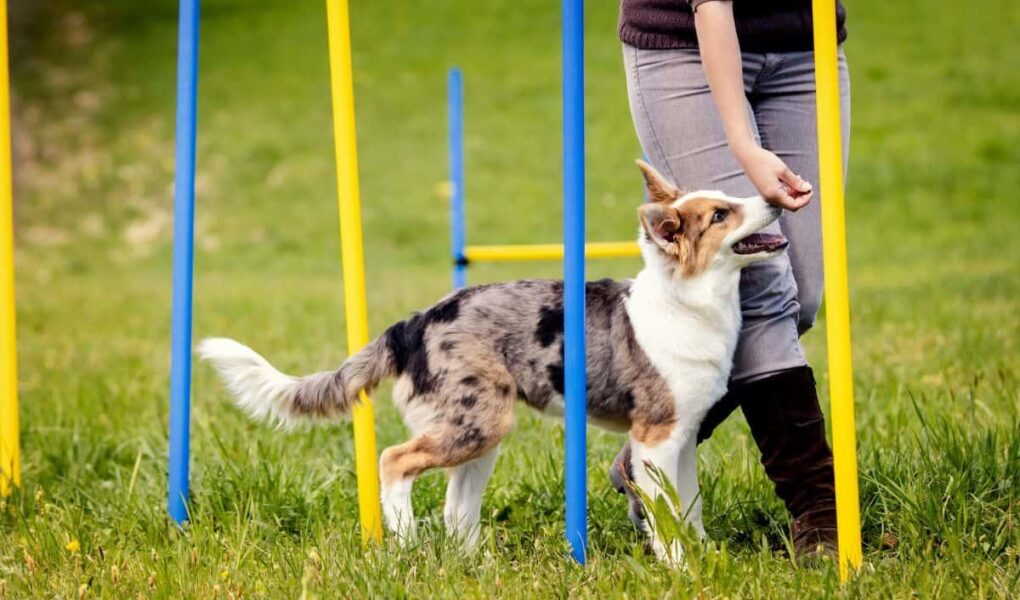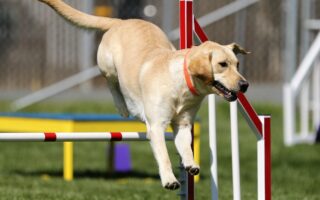Title: Unlocking the Secrets: Fun Tricks to Teach Your Dog
Dogs are more than just pets; they are our loyal companions and beloved family members. Their boundless energy, playful spirits, and unyielding love bring joy to our lives. But what if you could deepen that bond even further by teaching your furry friend some fun and impressive tricks? From the classic sit and shake to the more advanced roll over and play dead, teaching your dog tricks can be a rewarding journey for both of you. Not only does it provide mental stimulation for your pup, but it also strengthens your communication and trust. In this article, we will explore effective and creative techniques that make learning enjoyable for your canine companion. Whether you’re a seasoned dog owner or just starting out on your pet-parenting adventure, these tricks are sure to spark joy and enhance your connection. So grab some treats, and let’s dive into the wonderful world of teaching tricks to dogs!
Table of Contents
- Essential Preparations for Successful Training Sessions
- Engaging Techniques to Foster Learning and Bonding
- Common Challenges and How to Overcome Them
- Creative Tricks to Impress and Entertain Your Dog
- Q&A
- To Conclude
Essential Preparations for Successful Training Sessions
To ensure your dog training sessions are effective and enjoyable, it’s crucial to prepare both mentally and physically. Establish a distraction-free environment where your dog can focus on you without interruptions. Choose a quiet spot indoors or a secluded area outdoors. Gather all necessary training tools, such as treats, toys, and clickers, to keep your dog engaged. By organizing these essentials beforehand, you’ll maximize your training time and keep the session flowing smoothly.
Additionally, establish clear goals for each session. Each training session should have a specific focus, whether it’s teaching a new trick or reinforcing existing commands. Here’s a simple table to help outline your objectives and corresponding techniques:
| Training Objective | Recommended Technique |
|---|---|
| Teach “Sit” | Use treat lures while saying the command. |
| Teach “Stay” | Give a treat while gradually increasing distance. |
| Teach “Shake Hands” | Lift paw gently with encouragement and reward. |
By setting these preparations in place, you will create a structured approach that helps both you and your dog thrive during training sessions.
Engaging Techniques to Foster Learning and Bonding
Teaching your dog new tricks can be a fun and rewarding experience, enhancing your bond while fostering a spirit of curiosity and playfulness in your furry friend. To keep the sessions engaging, consider using positive reinforcement techniques. This includes giving treats, praise, or playtime as a reward for successful attempts. Here are some methods that are both effective and enjoyable:
- Interactive Games: Use fetch or hide-and-seek to reinforce learning through play.
- Clicker Training: Introduce a clicker to mark desired behaviors instantly, making it clearer for your dog.
- Variety in Commands: Mix up the tricks you teach to prevent boredom and keep your dog mentally stimulated.
To track your dog’s progress and celebrate their accomplishments, you can maintain a simple training chart. This not only helps you stay organized but also provides a visual representation of your dog’s learning journey:
| Trick | Date Started | Status |
|---|---|---|
| Sit | 01/10/2023 | ✅ Learned |
| Shake | 01/15/2023 | ⏳ In Progress |
| Roll Over | 01/20/2023 | ❌ Not Started |
Common Challenges and How to Overcome Them
Training your dog to perform tricks can come with its own set of hurdles. Consistency is the key element in overcoming most challenges. Dogs thrive on routine, so establishing a regular training schedule will help reinforce their learning. If your dog seems unfocused or unmotivated, try varying the environment or using high-value treats that will capture their attention. Patience is also essential, as some tricks may take longer for your furry companion to grasp. Break down the tricks into smaller steps and celebrate each small achievement to maintain a positive atmosphere.
Another common challenge is managing distractions. Dogs can easily become sidetracked by their surroundings, making it difficult to keep their focus on learning. To combat this, practice in quiet and controlled environments before gradually introducing more distractions. Positive reinforcement is invaluable—offer praise, treats, or playtime as rewards to encourage your dog’s enthusiasm. And don’t forget about socialization; exposing your dog to different environments and situations can help build their confidence and adaptability, making them more receptive during training sessions.
Creative Tricks to Impress and Entertain Your Dog
Engaging your furry friend with fresh tricks can turn routine training sessions into a delightful bonding experience. The key is to keep it fun and rewarding! Try teaching your dog to play hide and seek by having them sit while you hide somewhere in the house. Once you’re concealed, call your dog’s name; their joy in finding you will be palpable, and the thrill of the hunt will keep them eager for more. Additionally, consider introducing the spin trick. Hold a treat in front of their nose, then guide it in a circle to encourage your pup to turn around. Celebrate with enthusiastic praise when they succeed, reinforcing their progress with positive vibes!
For those days when your dog needs extra stimulation, put a twist on standard fetch by incorporating a paw-shake before throwing the ball. This not only adds a fun flair but also encourages your dog to focus on you before the play begins. Another entertaining option is the roll over command, which requires patience but is sure to impress friends and family. To streamline your teaching process, consider using a simple table to track progress:
| Trick | Difficulty Level | Time to Master |
|---|---|---|
| Spin | Easy | 1 week |
| Roll Over | Medium | 2-3 weeks |
| Hide and Seek | Easy to Medium | 1-2 weeks |
Q&A
Q: What are some fun tricks I can teach my dog?
A: Teaching your dog tricks can be a delightful bonding experience! Some popular tricks include “sit,” “shake hands,” “roll over,” and “play dead.” You might also consider teaching them more advanced tricks like “fetch a specific toy” or “spin.” The options are endless, so pick what excites both you and your furry friend!
Q: How do I get started with teaching my dog tricks?
A: Start with a quiet space free of distractions. Gather some tasty treats that your dog loves and choose a simple trick. Be patient and consistent; it’s best to train in short sessions of about 5 to 10 minutes, allowing your dog to stay focused and eager to learn.
Q: What’s the best method for reinforcing good behavior while training?
A: Positive reinforcement is key! Whenever your dog performs the desired action, immediately reward them with treats, praise, or play. This creates a positive association with the trick and encourages them to repeat the behavior. Remember, enthusiasm goes a long way—celebrate their successes, no matter how small!
Q: How can I keep my dog motivated during training sessions?
A: Keep the sessions upbeat and engaging. Use high-value treats that your dog doesn’t get at other times to keep their interest piqued. Vary the tricks to keep things fresh, and incorporate playtime or a favorite toy as a reward as well. A little variety helps keep the tail wagging and the excitement high!
Q: What should I do if my dog struggles to learn a trick?
A: If your dog seems confused or frustrated, take a step back. Break the trick down into smaller, more manageable steps. Go at your dog’s pace, and don’t hesitate to take breaks. They might just need a little extra time to grasp the concept, so patience is essential!
Q: How often should I practice tricks with my dog?
A: Consistency is more important than frequency. Aim for daily sessions, but don’t worry about the duration; even a few minutes each day can lead to great progress. Regular practice will help reinforce your dog’s learning and strengthen your bond over time.
Q: Can teaching tricks also have behavioral benefits for my dog?
A: Absolutely! Teaching your dog tricks can enhance their mental stimulation, improve focus, and curb unwanted behaviors by redirecting their energy. It also helps establish a stronger communication bond between you and your dog, making daily interactions smoother and more enjoyable.
Q: Are there any tricks that are particularly good for certain dog breeds?
A: While most dogs can learn a variety of tricks, some breeds excel in specific areas. For example, herding breeds like Border Collies are typically quick learners, making agility courses and tricks like “jump” a breeze. It’s great to tailor your training to your dog’s natural abilities and interests!
Q: How can I make sure my dog feels successful during training?
A: Celebrate every win, even the small ones! Pair your verbal praise with treats and affection. Use an upbeat tone, and consider taking it slow if your dog is struggling. Always end training sessions on a positive note with a trick they already know, ensuring your dog feels accomplished and eager for the next session!
To Conclude
teaching your dog new tricks isn’t just about impressing friends at the park or fetching accolades from the neighbors; it’s a journey that deepens the bond between you and your furry companion. As you embark on this rewarding adventure, remember that patience, consistency, and a sprinkle of creativity are your best allies. Every wag of the tail and every tilt of the head signifies their eagerness to learn and connect with you. So grab those treats, find a cozy corner, and let the fun begin! With a little time and effort, you’ll discover that the tricks you teach today will pave the way for a lifetime of shared experiences and joy. Happy training!



